Why I still use pens
The world is getting increasingly digital, yet there's still time for the analogue tool known as a pen.
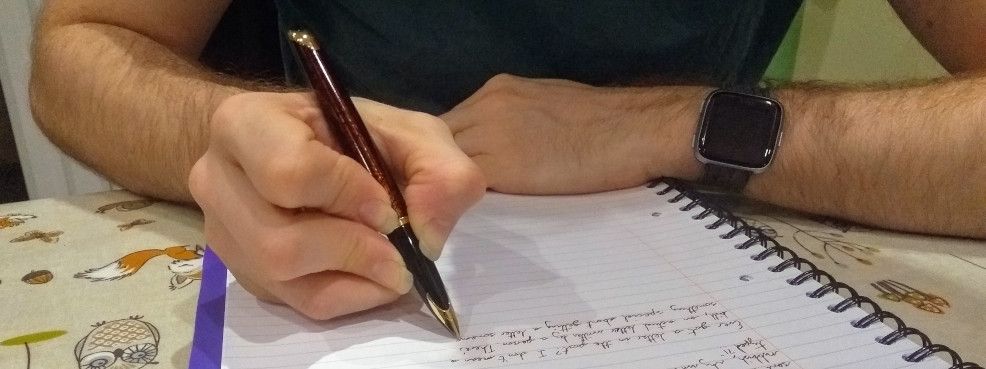
You'd think being a techy guy, and quite a geek, that everything I do would be digital in some way or another. From using e-mail in place of sending letters, to taking notes in a tool like Google Keep. Fact of the matter is, though, that I still use pens on a daily basis. Here's why...
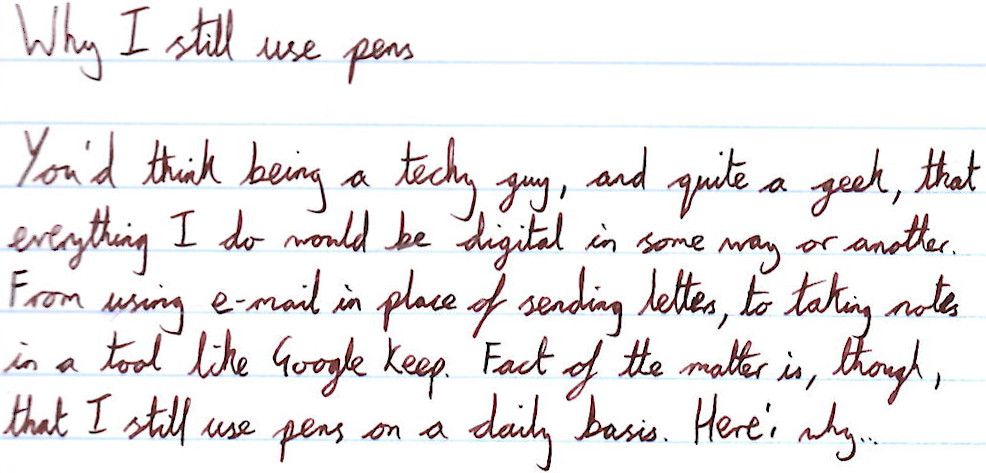
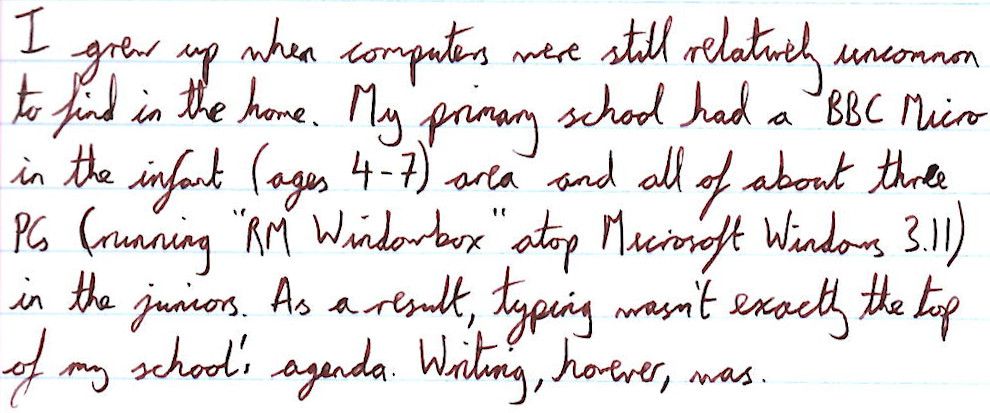
I grew up when computers were still relatively uncommon to find in the home. My primary school had a BBC Micro in the infant (ages 4 - 7) area and all of about three PCs (running "RM Windowbox" atop Microsoft Windows 3.11) in the juniors. As a result, typing wasn't exactly the top of my school's agenda. Writing, however, was.
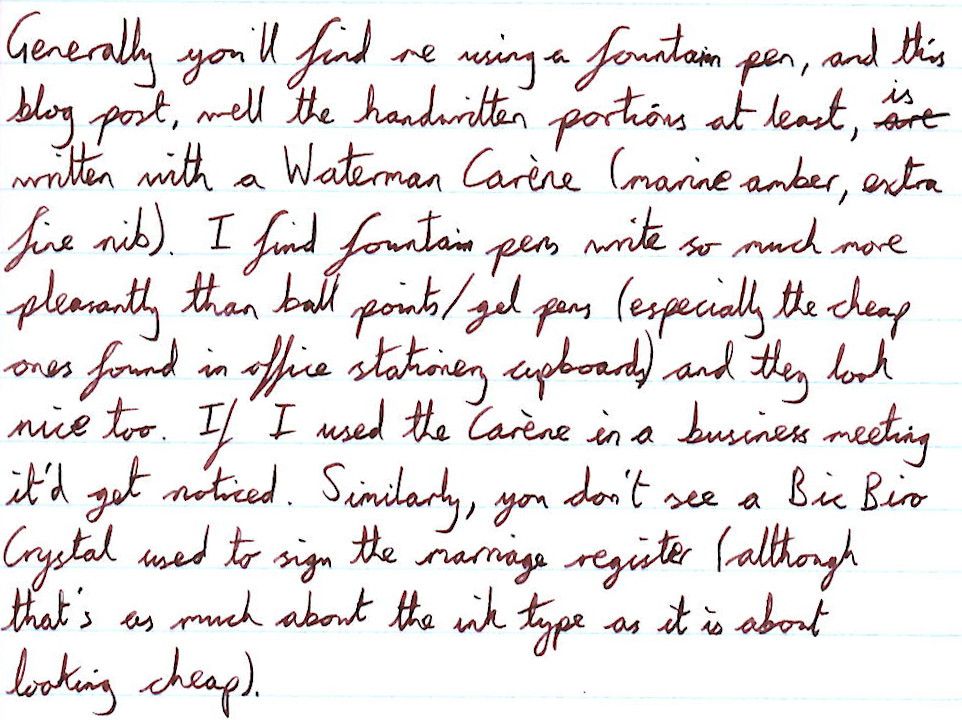
Generally you'll find me using a fountain pen, and this blog post, well the handwritten portions at least, is written with a Waterman Carène (marine amber, extra fine nib). I find fountain pens write so much more pleasantly than ball points / gel pens (especially the cheap ones found in office stationery cupboards) and they look nice too. If I used the Carène in a business meeting it'd get noticed. Similarly, you don't see a Bic Biro Cristal used to sign the marriage register (although that's as much about the ink type as it is about looking cheap).
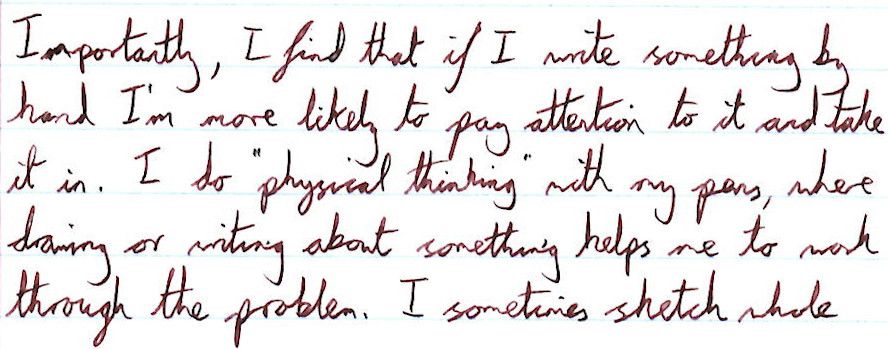
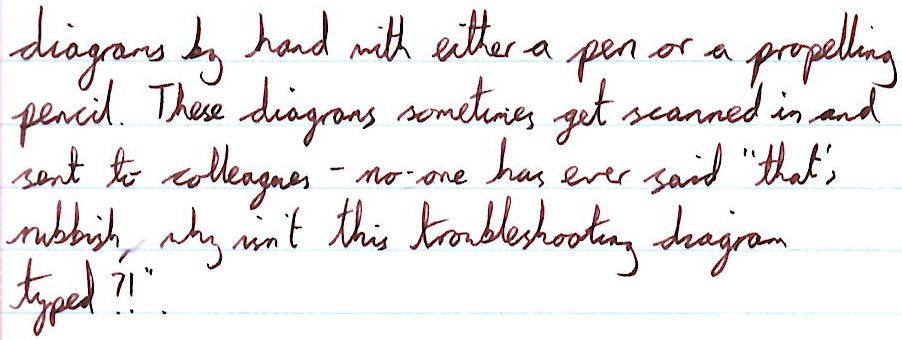
Importantly, I find that if I write something by hand I'm more likely to pay attention to it and take it in. I do "physical thinking" with my pens, where drawing or writing about something helps me to work through the problem. I sometimes sketch whole diagrams by hand with either a pen or a propelling pencil. These diagrams sometimes get scanned in and sent to colleagues - no-one has ever said "that's rubbish, why isn't this troubleshooting diagram typed?!".
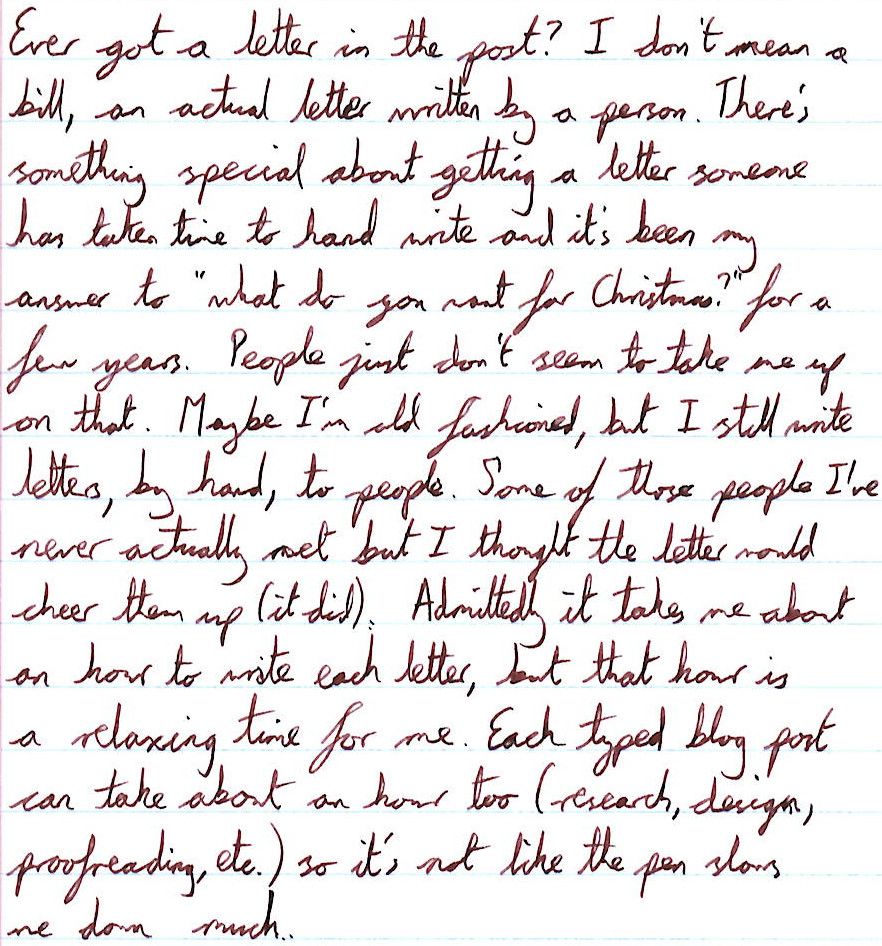
Ever get a letter in the post? I don't mean a bill, an actual letter written by a person. There's something special about getting a letter someone has taken time to hand write and it's been my answer to "what do you want for Christmas?" for a few years. People just don't seem to take me up on that. Maybe I'm old fashioned, but I still write letters, by hand, to people. Some of those people I've never actually met but I thought the letter would cheer them up (it did). Admittedly it takes me about an hour to write each letter, but that hour is a relaxing time for me. Each typed blog post can take about an hour too (research, design, proofreading, etc.) so it's not like the pen slows me down much.

I'm conscious this post is now very image heavy, so I'll type the rest now...
Obviously there are some drawbacks to writing by hand. For one, there's no spell check (besides a dictionary) and you certainly can't make a correction without the original mistake being noted by the reader. That said, so long as the mistake is corrected I think it's good being there - shows that you've actually thought about what you're writing. My biggest problem is that I've become sloppy over the years when forming the letter "e", so you'll spot a few occasions where I've either gone back to make the "e" less like a "c", or where I've missed that altogether. Letters with a lot of down strokes ("m" or "rn" together) are also a bit sloppy for me - something to work on. Messier corrections are another drawback, but not insurmountable.
I know some people comment on the messy nature of pens, particularly where a fountain pen covers their hands in ink, and it's not something I'm immune to. I've had my fair share of walking from my desk at work to the kitchen sink to wash my stained hands, but that's by far the exception, not the rule. If you're using correct equipment (the right cartridge or converter for the pen) then ink explosions are less of an issue. Consider also how they're transported - tossed in the bottom of your bag is going to be a problem, whereas secured so it moves less seems to be OK (bear in mind that I'm a cyclist, so I ride to work with these pens, having only had one pen accident as a result).
Having mentioned the drawbacks, I want to cover the positives. Firstly, I take a lot of notes, particularly in meetings, and doing so by pen is much faster (for me at least). There's also the added bonus that there's no "laptop barrier" between you and everyone else - laptops can be a real distraction at meetings, especially if someone is typing noisily.
Another benefit is the environmental impact. Ever seen a broken throwaway pen that's been run over by an office chair? I'd suggest every office has at least one, along with many pens dropped down the back of desks. That's a lot of plastic across the world that ends up in the bin. Even once the pen is done (and rarely refilled) there are more problems as in my experience they're not often recycled. The best selling disposable ballpoint, the Bic Cristal, has been sold since 1950 and the billionth Cristal was sold in 2006 (same link) - that's a lot of plastic waste. Conversely, I use cartridge converters in my fountain pens along with bottled ink. A fill of the converter might last me a week of constant use, it varies, but the bottle of ink just goes on and on. According to Amazon, the Parker Quink blue black in the photo was bought in November 2018 and it's only half used. The Waterman "harmonious green" was bought in July 2018, so is doing less well, but I'm using it a lot at the moment.
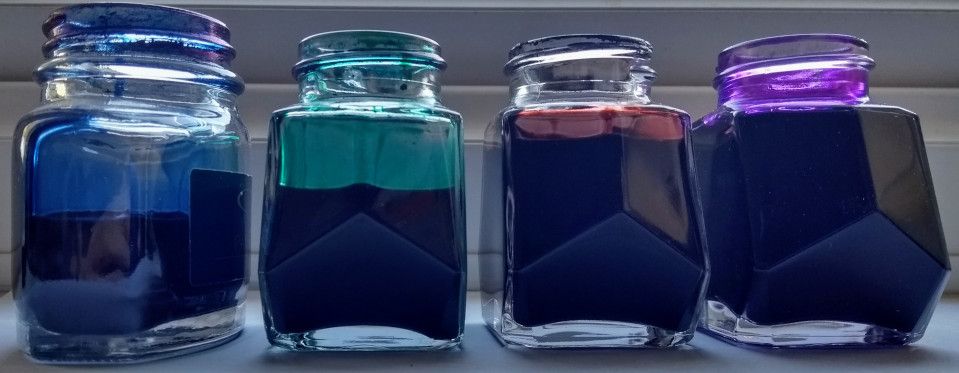
There's a nice article here about using reusable pens and I agree with the author that switching your thinking from disposable living to reusable tools caring about your pens is important. I know where all of my fountain pens are, at all times [1] so I've not lost one in recent (five+) years. While it might take more resources to make the pen initially, compared to a single disposable Biro, a fountain pen can last a lifetime - the oldest one in my collection is from 1958 - 1967 (a Parker Slimfold) and belonged to my grandmother. It's still going strong, and I love writing with it despite it being too slim for me really.
Hopefully I've encouraged you to think about using a pen again and fountain pens is a subject I'll happily geek out on. Among my friends I'm the pen geek and was even contacted lately to confirm what model a pen was (Parker IM, from around 2010) based on having similar pens in my collection (I'm sure there'll be a blog post about my collection soon!). Reusable ballpoints (rollerballs) do exist, and I'm a fan of the rather timeless Parker Jotter, if you're worried about the maintainance of a fountain pen.
(Publishing this post after Christmas I'm pleased to say I received two handwritten letters :) )
Banner image: Me writing with my Waterman Carène, photo by my wife.
[1] Six are currently on the stairs to the loft (safe from the children yesterday), either in a pen roll (5) or box (1), another one is on my desk in front of me in its box and the seventh is to my left. There's even a cheaper pen or two from my school days in the pot on my desk, a calligraphy pen on the shelf above me and a dip pen with a set of inks there too.

